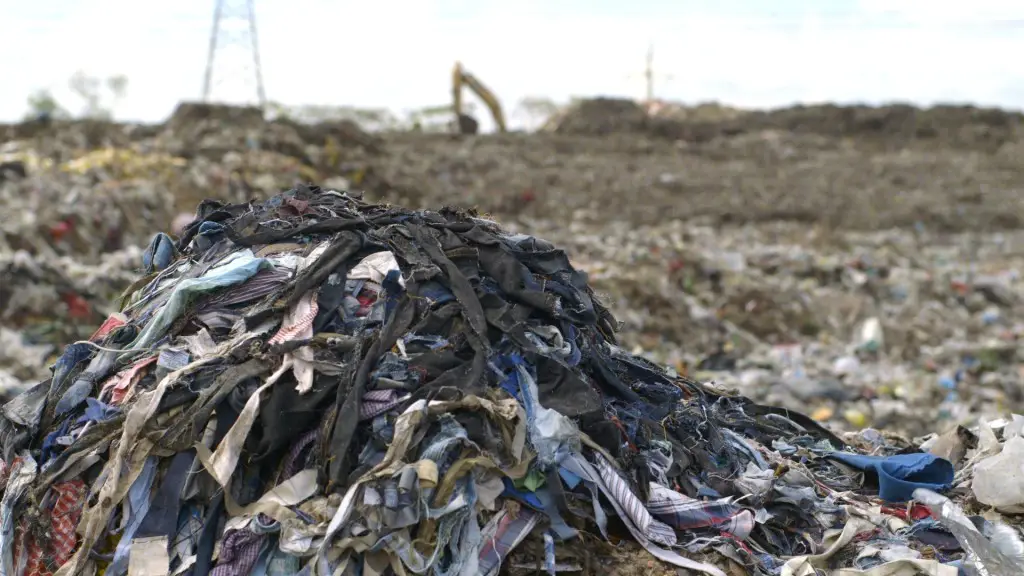As a result of the human desire for instant gratification and the protean nature of fashion trends, consumers worldwide have unwittingly allowed the companies they love to turn the clothing industry into a tangled web of environmentally threatening mass production.
Though the ramifications of such a hazard are many, by far the greatest danger is the threat fast fashion poses to the environment. According to Forbes, the textile industry accounts for 10 percent of global carbon emissions and is the second largest industrial polluter behind oil.
Part of the problem is that many textiles are made of synthetic fibers, whose inorganic composition makes for environmental hazard. Polyester, for example, the most commonly used fabric in the world, takes nearly two centuries to decompose, and in 2015 required 70 million barrels of oil to produce.
And while the use of synthetic fabrics is worrisome, their improper disposal is an ecological nightmare. Because they deteriorate so slowly, if mismanaged, rather than being donated and reused, clothing made from artificial fabrics will waste away in landfills forever. Waste at this scale should alarm everyone, especially students, because even if you dislike shopping secondhand or want to avoid changing your shopping habits, you can still help the environment, not to mention someone in need, by donating your clothing.
I admit that before learning about the repercussions of mass consumption and its impact on the environment, I used to throw away my clothes, much of the time without thinking twice. It wasn’t until I grew frustrated with my clothes fading and falling apart that I stopped shopping at fast fashion retailers such as F21 and H&M.
When I began working at a vintage store, I realized that all of the clothing was at least 20-years-old, but still in pretty incredible shape. The garments owe their durability to when and where they were made, as many of them were produced before the ’90s, which was when many American companies began outsourcing their labor. My obsession for vintage and thrift stemmed from that realization, and from then on I associated the cheap price tags of fast fashion with low quality and unethical practices.
Outsourcing not only allows companies to produce more merchandise in less time, but it also significantly improves their bottom line. Unfortunately, those gains come at the cost of fair wages, humane working conditions, and workers’ rights.
What’s more, children in the third world are being exploited right alongside the adults. Imagine your little brother or sister working in a small room packed with people and machinery and being denied windows, air conditioning, food, water, or breaks. Meeting the fast fashion cravings of the West can only come as the result of unethical practices, and companies will continue to behave criminally so long as our purchasing behaviors validate their choices.
So how can you make the switch from fast fashion brands to environmentally conscious companies? Many students are under the impression that eco-friendly options are expensive and therefore infeasible. You might think the only way to make a difference is by shopping for brand new clothes, made in house, by ethical brands. As a college student though, since you likely cannot afford to shop those brands, consider thrifting or shopping vintage, choices that are cheap, effective, and even charitable at times
Although you might thrift brands that have participated in unethical outsourcing, by getting the clothing secondhand you are shopping garments that have already been produced. As a result, you are still supporting the brand you like without feeding into their bad habits.
What’s more, aside from the environmental benefits, thrifting or shopping vintage makes it easier to curate an individual style. When shopping fast fashion, you are choosing from the same racks of clothing as everyone else in the world. As someone who feels that fashion is a huge part of self-expression, I love knowing that shopping recycled ensures that you will dress in clothing that no one else will have.
Whether you embrace secondhand shopping or not though, students need to start holding their favorite companies accountable for their modes of production. Once you do, real changes will follow quickly behind.

















[…] and selling secondhand is not only good for cutting down on clutter, it also pushes back against fast fashion, or crappy clothes made by severely underpaid workers. You also get bonus points for thinking about […]
[…] and selling secondhand is not only good for cutting down on clutter, it also pushes back against fast fashion, or crappy clothes made by severely underpaid workers. You also get bonus points for thinking about […]